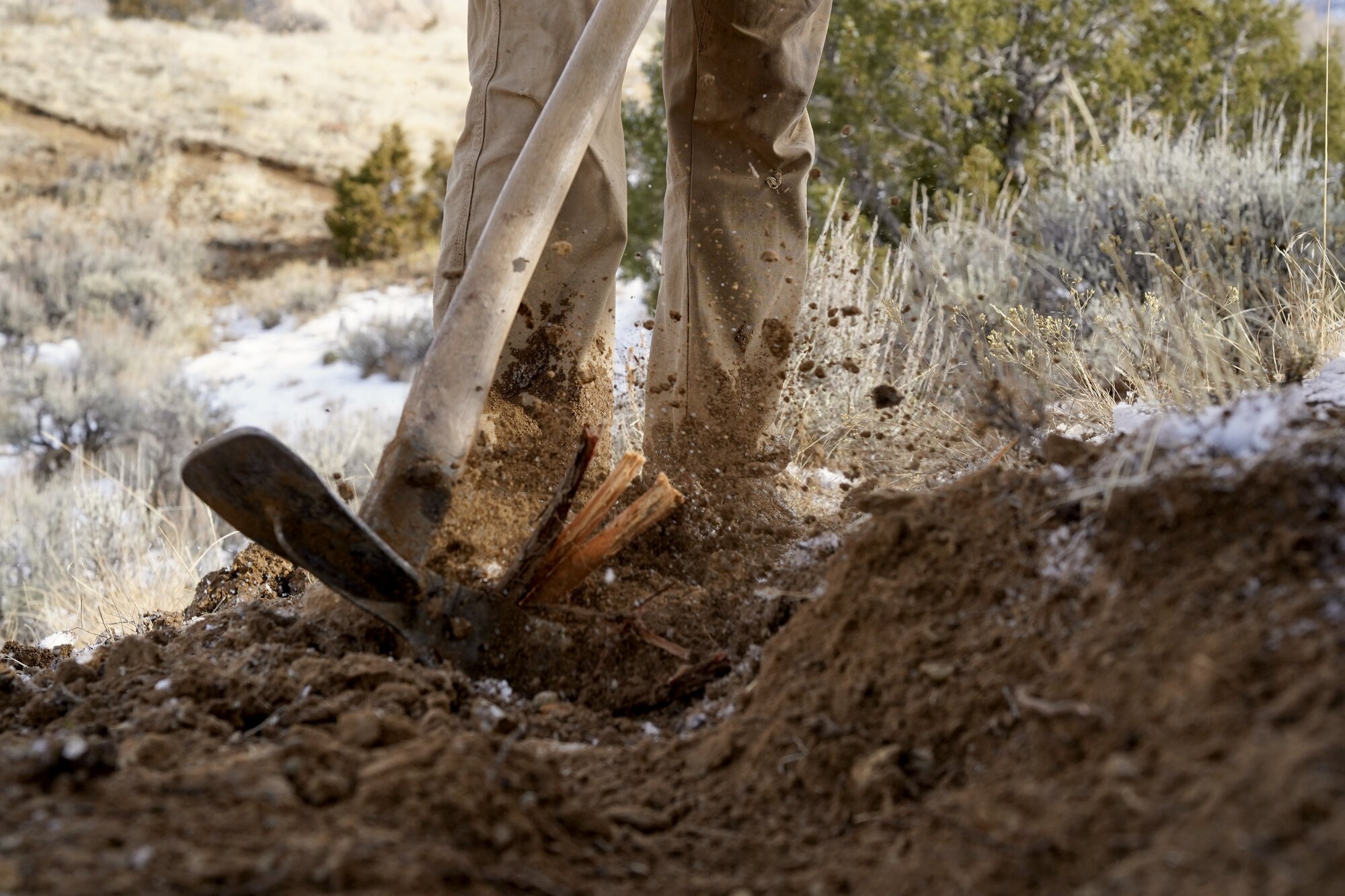Behind the ‘back-breaking’ work of building new mountain bike trails

FRUITA, Colo. — Some of the trails at 18 Road are 30 years old. Now, the world-famous mountain bike destination in Fruita is getting an upgrade.
Trail managers say the steady increase in visitation at 18 Road is a big reason for adding the proposed new routes. The North Fruita Desert, commonly called 18 Road, is a Bureau of Land Management recreation area at the base of the Book Cliffs in Mesa County. Its visitors include mountain bikers, off-highway vehicle riders, target shooters and grazing cattle.
“In the last five years, we estimate that use has increased by over 50%. So as more people are out there enjoying those trails, they start to get more crowded and […] that starts to affect people's experience,” said Chris Pipkin, outdoor recreation planner with the Bureau of Land Management.
Instead of adding a few trails here and there, and only fixing trails as issues came up, BLM and other trail managers decided to create a plan that would address everything from new routes to new toilets.
Taking years to implement, much of the work laid out in the 2019 Trails Master Plan is almost done.
18 Road currently offers about 30 miles of trails for various skill. The master plan calls for that number to double.
“We got about $45,000 to invest in hiring an outside consultant that came in, got public feedback [and] worked with the stakeholders to identify what needs they thought we had for the trail system,” said Pipkin.

A view of the Grand Valley from the trails of 18 Road.
Photo: Joshua Vorse, Rocky Mountain PBS
The cash for the plan comes from a Colorado Parks and Wildlife trails planning grant.
A lot must happen before new trails can be built on public land. Once the proposal goes through the BLM planning process to analyze the impact of each new trail, it moves to the National Environmental Policy Act compliance process, Pipkin said. That NEPA process goes over every foot of new trail to see how it would interact with plants, animals, paleontological resources and other public land uses such as oil and gas.
Construction began in 2022 after the completion of the environmental impact study. That included the first eight or nine miles, constructed by volunteer projects and the Mesa County trail crew, according to Pipkin.
Completing the build-out, including trails in difficult terrain, would take more resources.
“It's been great that we've had that funding to pay for a professional trail crew. In the past we relied on a lot of volunteers to build trails, but there's only so much capacity for that,” said Pipkin.
That funding comes from another CPW grant for non-motorized trail construction for $250,000. Pipkin says volunteers and community partnerships are the only way to get a large-scale project done.
The physical job of building trails, often done by hand, isn’t easy.
“It’s back-breaking work,” said Ross Mittelman, trails coordinator for Mesa County Public Health.

Singletrack Trails workers crave out new trails around 18 Road.
Photo: Joshua Vorse, Rocky Mountain PBS
Once environmental impact studies determine where new trails will go, the trails are measured and cut into the ground one foot at a time. Over the winter, trail crews with Singletrack Trails, a private company, hacked into frozen hillsides with hand tools such as shovels and picks to build the remaining 20 miles of new trails.
Singletrack Trails also used some unusual tools, with names like "the beast," — basically a beefed-up garden hoe fused with an axe, made just for building trails and digging lines to fight brush fires.
That progress on the trails is going well; Mittelman and Pipkin expect it to be done by spring.
“Trails don't just appear on their own. There's a lot of work that goes into it,” said Pipkin.

Mittelman and his trail crew measure the progress foot by foot, and double check that the trail is following an exact GPS path, marked by small pinkish-red flags.
Once the trails are built, they still need names and signs. Right now, they’re called things like “Trail P.9,” “Trail E.2 Climb,” and “Trail E.1 Loop,” based on the route names in the master plan.
Pipkin hopes to gather name ideas from people after they get to ride the trails for a while, and have the signs and names finished this fall.
Joshua Vorse is a multimedia journalist at Rocky Mountain PBS. Joshuavorse@rmpbs.org.